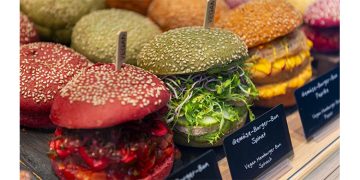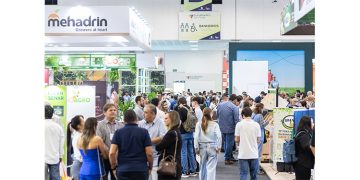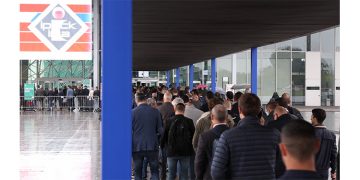Once again, Anuga Meat is uniting the who’s who of the international meat industry at Anuga in Cologne from 7 to 11 October 2023. With currently around 600 exhibitors the Anuga trade show for meat, sausage and poultry has an excellent alignment.In total, more than 800 producers from the meat and sausage segment are awaited when the trade fair starts.
In order to accommodate the demands of the consumers for a healthier diet, more regionality, sustainability and improved animal welfare, in addition to meat, sausage and poultry this year’s Anuga Meat will once again also be focusing on vegan and vegetarian meat alternatives as well as vegetable-based substitute products containing proteins. The latter will particularly be the emphasis of the “Meet more meatless” special event.
This year’s top exhibitors include among others Bell, Beyond Meat, Bigard, BRF, Campofrio, Cris-Tim, CPF, ElPozo, Grupo Vall Companys, Inalca, JBS, Lamex, LDC, Noel, Tönnies, Tyson, VanDrie, Vion, Westfleisch and Wiesenhof. Important European group participations from Belgium, France, Great Britain, Italy, the Netherlands and Spain will also be taking part. Furthermore, the South American continent will also be represented by Argentina, Brazil, Colombia, Paraguay and Uruguay. Important group stands include: Asociación Colombiana de Porcicultores (Porkcolumbia), Associação Brasileira das Indústrias Exportadoras de Carnes (Abiec), Associação Brasileira de Proteína Animal (ABPA), Federación Colombiana de Ganaderos (FEDEGAN), Federación Nacional de Avicultores de Colombia – Fondo Nacional Avícola (FENAVI), German Meat, Meat and Livestock Australia (MLA), Instituto Nacional de Carnes (INAC) und Instituto de la Promoción de la Carne Vacuna Argentina (IPCVA). They represent the entire spectrum of meat production in its various processing stages: from unprocessed meat products, to meat preparations and convenience products, through to fine sausage and ham products and regional specialities.
The sub-segments of Anuga Meat are divided up across the halls as follows, in order to give the trade buyers a better orientation: Hall 5.2 sausage products, Hall 6 red meat, Hall 9 poultry and red meat. The high participation of suppliers at Anuga Meat shows that the export business continues to be of central importance for the international meat industry. Tapping into new market potential is particularly important here.
Trends and themes: Worldwide market shows growth and changing consumer preferences According to statistics from the knowledge partner, Innova Market Insights, (data from July 2017 to June 2022), the meat industry is recording an average annual growth rate of 5.4 percent worldwide for new product introductions. This indicates a dynamic and changing market that is characterised by changed consumer preferences.
Several, strongly increasing demands were recorded within the category ‘Meat’. The consumers place high value on the regionality and traceability of the products and are still addressing the themes animal welfare and protection. Ethical and environmentallyfriendly demands achieved a growth rate of 17 percent, followed by Halal products on 14 percent. A high protein content and corresponding demands regarding the origin also recorded a growth rate of 14 percent. Regarding the market development, Vietnam proved to be the fastest growing market with a growth rate of 51 percent for new product introductions. Closely followed by South Korea with a growth rate of 38 percent in the same period of time.
Whilst Vietnam and South Korea are experiencing rapid growth, the United Kingdom, China and Germany showed the highest activity for new product introductions between July 2021 and June 2022. These three countries have a market penetration of 19 percent, 14 percent and 13 percent respectively, which indicates a strong presence and high consumer interest in meat products.
The future of meat substitutes An ongoing trend is the rise in demand for plantbased alternatives or meat substitute products, also to address the burgeoning flexitarian market. According to a consumer survey (2021), the consumers are more open to new technologies after having seen the developments of plantbased innovations (41 percent).
The reasons for adopting a reduced meat diet are generally similar to those of the vegetarians for not eating meat – i.e. a mixture between health and environmental motives such as the reduction of the consumption of resources.
This trend is leading to meat aisles developing into a protein aisle, featuring options made from alternative proteins including soy, wheat, pea protein and many more.


















